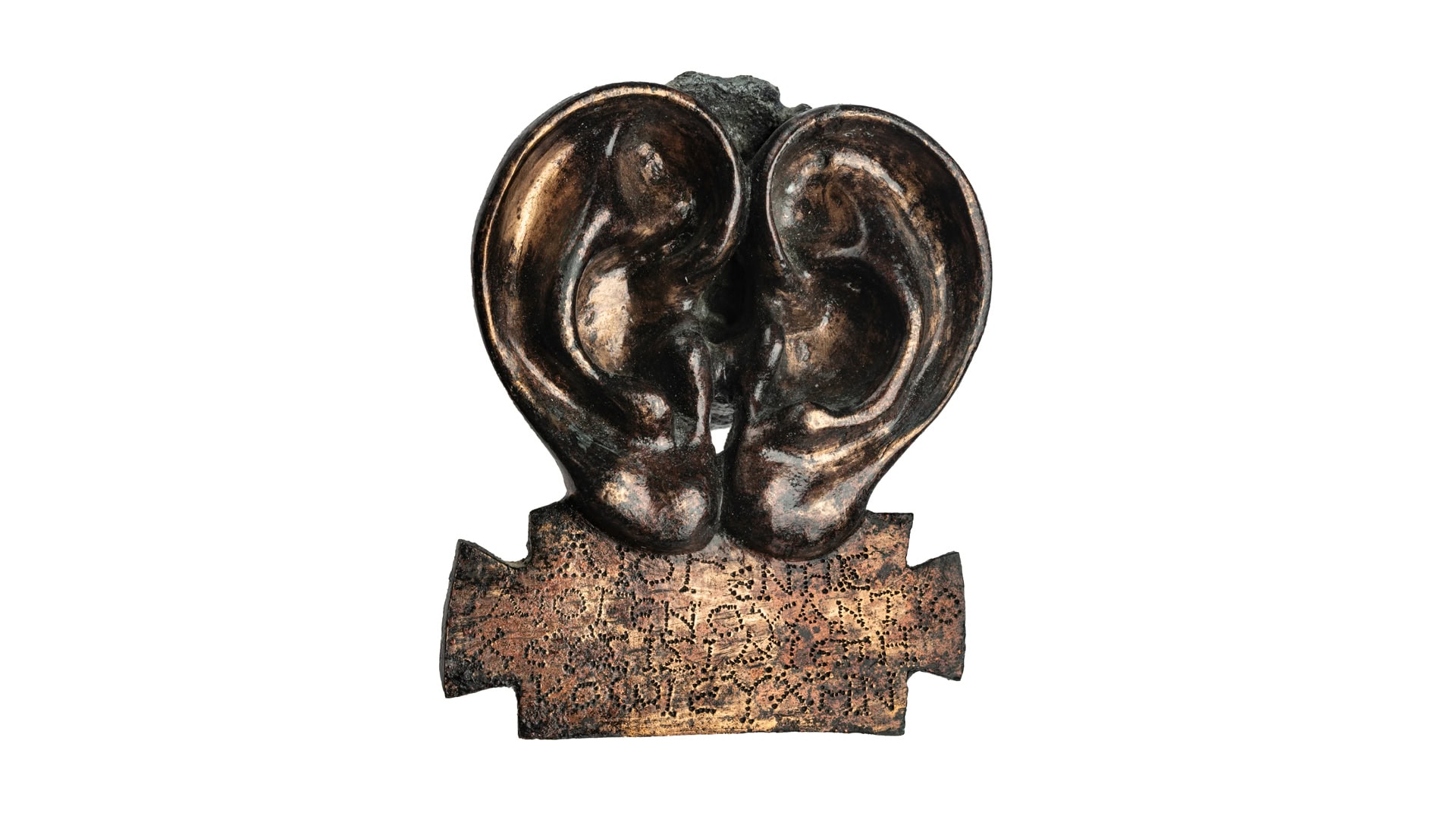Pair of bronze ears with dedicatory inscription to Isis

Two bronze human ears in relief, dating back to the Hellenistic period, bear testimony, according to the accompanying inscription, to the votive offering dedicated to Isis by Diogenes, from Antioch, in the most significant sanctuary of Egyptian gods in Delos.
Diogenes addresses his supplication (εὐχή=prayer), like the ears he proffers of the merciful goddess Isis who is “willing to listen”, hoping to be heard.
The cult of Isis, the great and primordial Egyptian goddess, was introduced into ancient Greece in the 4th century BC, and gained greater prominence after the campaign of Alexander the Great and the establishment and subsequent influence of the Prolemaic Kingdom. It was originally spread through merchants and travellers to insular, coastal cities and ports, such as Piraeus and Eretria.
During the Hellenistic times, the cosmopolitan island of Delos was dominated by Isis who appears with a multitude of invocations (Dikaiosynē, Nemesis, Nike, Prōtogeneia, of Taposiris, Tychē, Hygeia) and is accompanied by many epithets (dikaia=righteous, euploia=of good sailing, sōteira=deliverer, chrēstē=serviceable), while she is associated with goddesses with whom she shares common attributes, such as Astarte, Aphrodite and the Mother of the Gods.